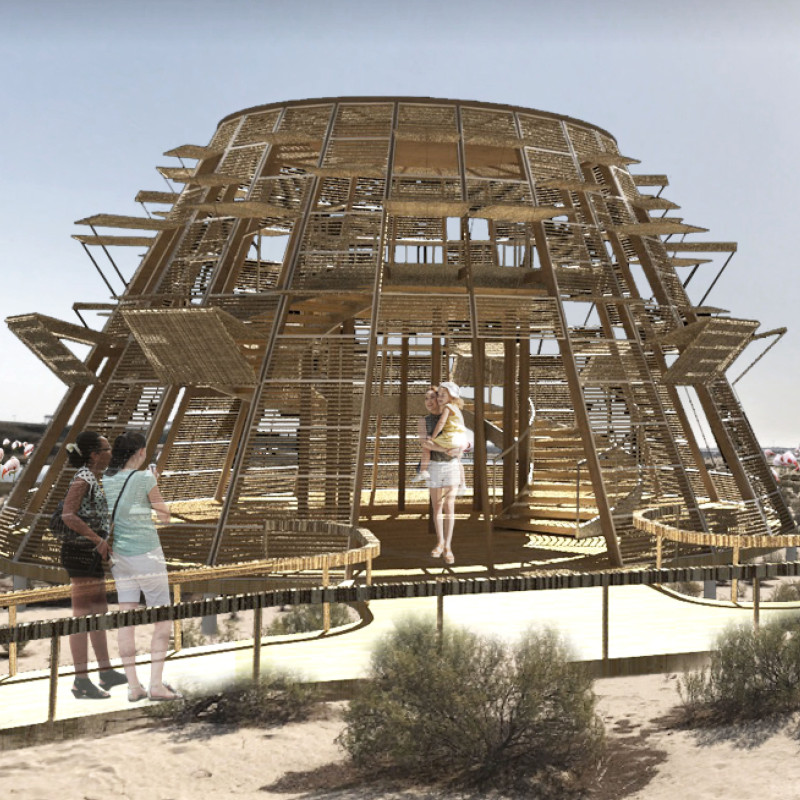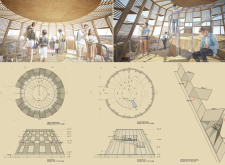5 key facts about this project
The primary function of the tower is to provide a space for observation and education, allowing visitors to experience the natural environment without disturbing wildlife. The design combines functional aspects of visitor interaction with a commitment to environmental sustainability.
The tower is characterized by its sculptural form, mimicking organic shapes found in nature. Its conical structure promotes a sense of flow between the interior and exterior spaces. Key materials utilized include wood plastic composite for flooring, timber columns for support, and steel elements to ensure structural integrity. The operable facades enhance user experience, allowing visitors to adapt their interaction with the surroundings as needed.
This project differentiates itself from conventional observation towers through its emphasis on inclusivity and interactivity. It accommodates diverse visitor needs with wide pathways and accessible viewpoints, encouraging a broad segment of the public to engage with the wetland environment. The use of sustainable materials, sourced locally whenever possible, aligns with conservation efforts and minimizes the ecological footprint of construction.
Additionally, the design integrates educational elements about the local ecosystem, promoting greater understanding and appreciation of the flamingos and their habitat. The architectural approach taken in this project balances function with aesthetics, ensuring that the tower serves as both an observation point and a focal point for conservation education.
In exploring the architectural plans and sections, one can gain deeper insights into the structuring of space and the unique design strategies employed. An examination of the architectural designs reveals how functionality and environmental context have been successfully merged. For further details about this project and its innovative design features, readers are encouraged to delve into the project presentation and explore the various architectural ideas that inform its development.


























